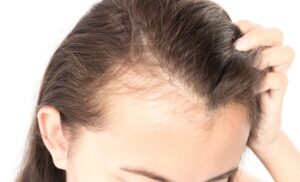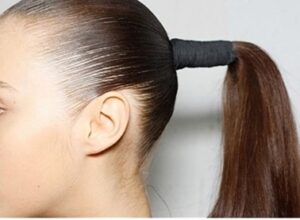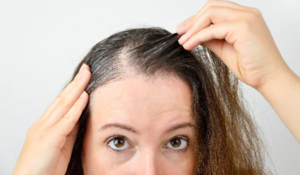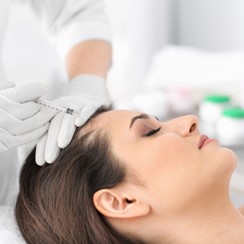Regrowth After Traction Alopecia
What to expect post transgender bottom surgery?
February 23, 2023Nipple Reduction Surgery for Males
March 24, 2023
Hair loss, which occurs for various reasons, can drastically affect a person’s self-image and confidence.
Traction alopecia is one type of hair loss that you can prevent simply by taking care of your hair and practicing simple modifications.
It is caused by traction or damage to the hair follicles due to tight hairstyles, hair extensions, or hairpieces secured with tight clips or bands.
It is seen in the front and crown of the head, but it can also occur on the sides or back of the head. The hair loss associated with traction alopecia is usually gradual and may not be noticeable at first.
However, the hair may become thin and brittle over time, and the hairline may start to recede. If left untreated, traction alopecia can lead to permanent hair loss.
So be prompt in seeking medical attention if your hair is thinning or has a receding hairline. You can visit Dr. Vinod Vij for accurate diagnoses and precise hair loss treatment.
He is one of the best hair transplant surgeon in Mumbai and practices at Clinique Aesthetica, a one-stop destination for all your hair problems.
Continue reading about the causes, symptoms, treatments, and traction alopecia recovery time.
What are the causes of traction alopecia?

Some everyday hairstyles that can cause traction alopecia include tight ponytails, braids, cornrows, and buns. These styles can cause damage to the hair follicles, leading to hair loss.
Other factors that may contribute to the development of traction alopecia include:
- The use of hair products that contain harsh chemicals or that are applied too frequently
- Using heat styling tools, such as curling irons or straighteners, on a regular basis
- Using hair clips or other hair accessories that are too tight or that pull on the hair
- Wearing tight headbands or hats that put pressure on the hair
- Frequent washing or styling of the hair
- Genetic predisposition to hair loss
What are the signs of permanent traction alopecia?

Some common symptoms of traction alopecia may include:
- Thinning of hair in the areas where the hair is styled tightly
- Bald patches or areas of broken hair
- Receding hairline or hair loss at the temples
- Itching or irritation on the scalp
- Flaky or dry scalp
- Bumps
- Pus-filled blisters
- Folliculitis
If you experience any of these side effects of traction alopecia, consult a hair specialist at the earliest who can help diagnose the condition and recommend treatment options.
Is the hair regrowth after traction alopecia patchy?
In some cases, the hair loss caused by traction alopecia is reversible if the individual stops wearing tight hairstyles and allows their hair to rest and recover.
However, if the damage to the hair follicles is severe, it may be more difficult for the hair to regrow, and the regrowth may be patchy. It is also possible that the hair may not regrow at all if the damage to the follicles is irreversible.
The success of hair regrowth treatments for traction alopecia can also vary depending on the severity of the damage to the hair follicles and the individual’s response to treatment.
What are the treatments that help hair regrowth after traction alopecia?
The hair loss associated with traction alopecia is usually reversible, but it can take time for the hair to regrow. Some treatments that may help hair regrowth after traction alopecia include:
- Medications: Sometimes, doctors may prescribe medications to stimulate hair growth. Minoxidil is a topical medication that is effective in promoting hair growth.
- Taking hair growth supplements: Hair growth supplements, such as biotin or collagen, may help stimulate hair growth and improve the health of the hair and scalp.
- Using low-level laser therapy: Low-level laser therapy is effective in promoting hair growth and improving scalp conditions.
- Platelet-rich plasma (PRP) therapy: PRP is a treatment that involves injecting a concentrated solution of platelets and growth factors into the scalp. The growth factors in PRP boost hair growth and help repair damaged hair follicles.
- Hair transplants: In severe cases of traction alopecia, a hair transplant may be necessary to restore the appearance of the hair. Hair transplants involve transferring hair from a donor area (usually the back of the head) to the areas experiencing hair loss.
Dr. Vinod Vij is a cosmetic and plastic surgeon with 25+ years of experience. He is an expert in all the above treatments for traction alopecia and is considered one of the best hair transplant surgeon in Mumbai.
What care should be taken for fast hair regrowth after traction alopecia?
Here are some steps you can take for fast hair regrowth after traction alopecia:
- Refrain from hairstyles that put excessive traction on your hair, such as tight braids, ponytails, or buns.
- Gently brush your hair to avoid causing further damage to the hair shaft.
- Use a wide-toothed comb or brush specifically designed for detangling hair to minimize breakage.
- Avoid using heat-styling tools, such as flat irons or curling irons, as these can further damage your hair.
- Use a deep conditioning treatment to moisturize and nourish your hair and scalp.
- Avoid using harsh chemicals, such as hair dyes or relaxers, which can weaken your hair.
- Certain supplements, such as biotin and folic acid, may help support healthy hair growth. But take these after talking to your doctor.
- Consult a doctor for treatment options, such as medication or low-level laser therapy.
Regrowth after traction alopecia may be slow and may not be complete. However, taking good care of your hair and avoiding excessive traction on your hair can encourage healthy regrowth and prevent further hair loss.
Is it possible to undergo a hair transplant again if there is no regrowth after traction alopecia?
It is possible to undergo another hair transplant if there is no regrowth after traction alopecia. Still, it is vital to address the underlying cause of the hair loss before proceeding with any additional hair restoration procedures.
If the cause of the traction alopecia is not addressed and the individual continues to wear tight hairstyles or apply excess traction to their hair, it is likely that the hair transplant will not be successful in the long term.
Therefore, if you are considering a hair transplant, you must have realistic expectations and understand that you will require ongoing care and maintenance to maintain the transplant results.
Do not take traction alopecia lightly, as it can cause irreversible damage to your hair and scalp in the long run.
Book an appointment at Clinique Aesthetica for consultation with Dr. Vinod Vij, a leading hair restoration surgeon. He will recommend appropriate treatment options for traction alopecia to help prevent further hair loss and promote regrowth.
FAQs
No, nipple reduction, whether in men or women, will require surgical intervention. Unlike most other body parts, exercising or dieting will not make any difference to protruding nipples.
You may have puffiness in your chest due to various reasons, including hormonal imbalance and steroid use. Also, your breasts may start to sag and lose firmness as you age or lose a lot of weight. Exercises for the chest muscles and massages will not help in this case. Only a nipple lift will result in firmer breasts.
The nipple lift is a surgical procedure done under local anesthesia and takes about 30 minutes to complete. The areola and nipple are set at their normal height during this procedure. The nerves and blood arteries are typically used to connect and fix the nipple.
As with a nipple reduction surgery, areola reduction cost may cost anywhere between ₹ 25,000 - ₹ 1,00,000. Please remember the price can differ depending on the city, the amenities and technology used as well as the expertise of the cosmetic surgeon, and your individual situation.



